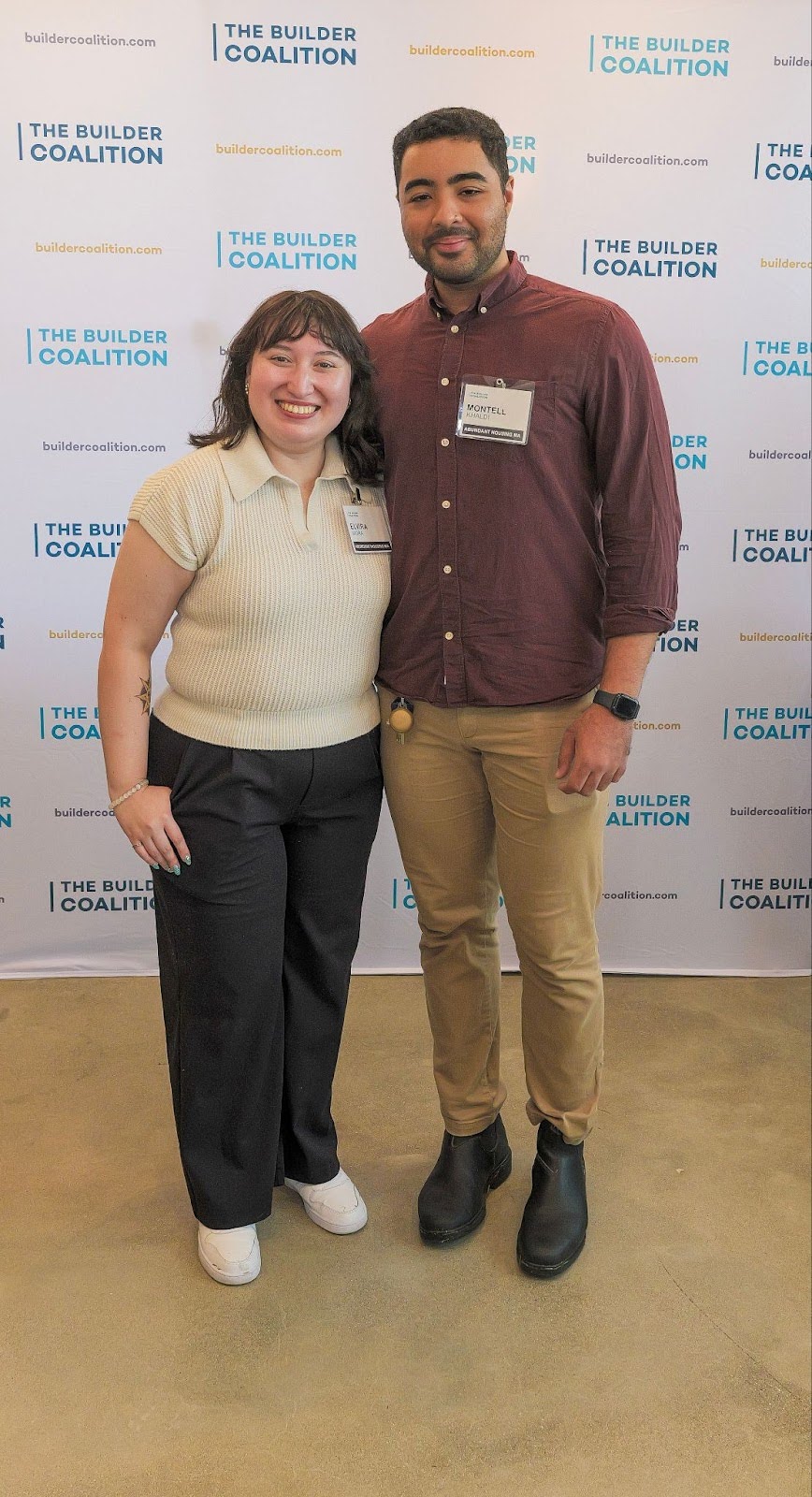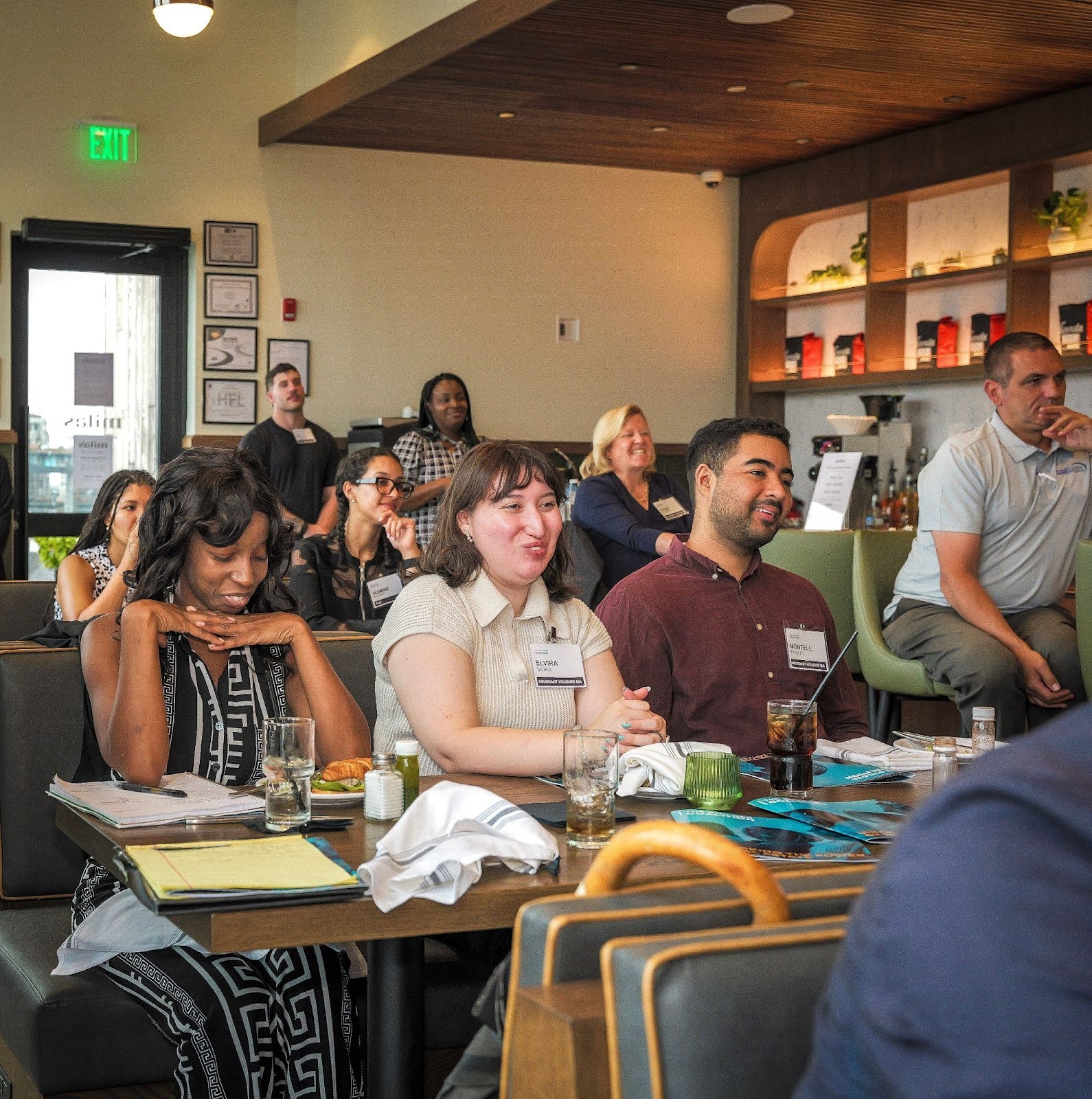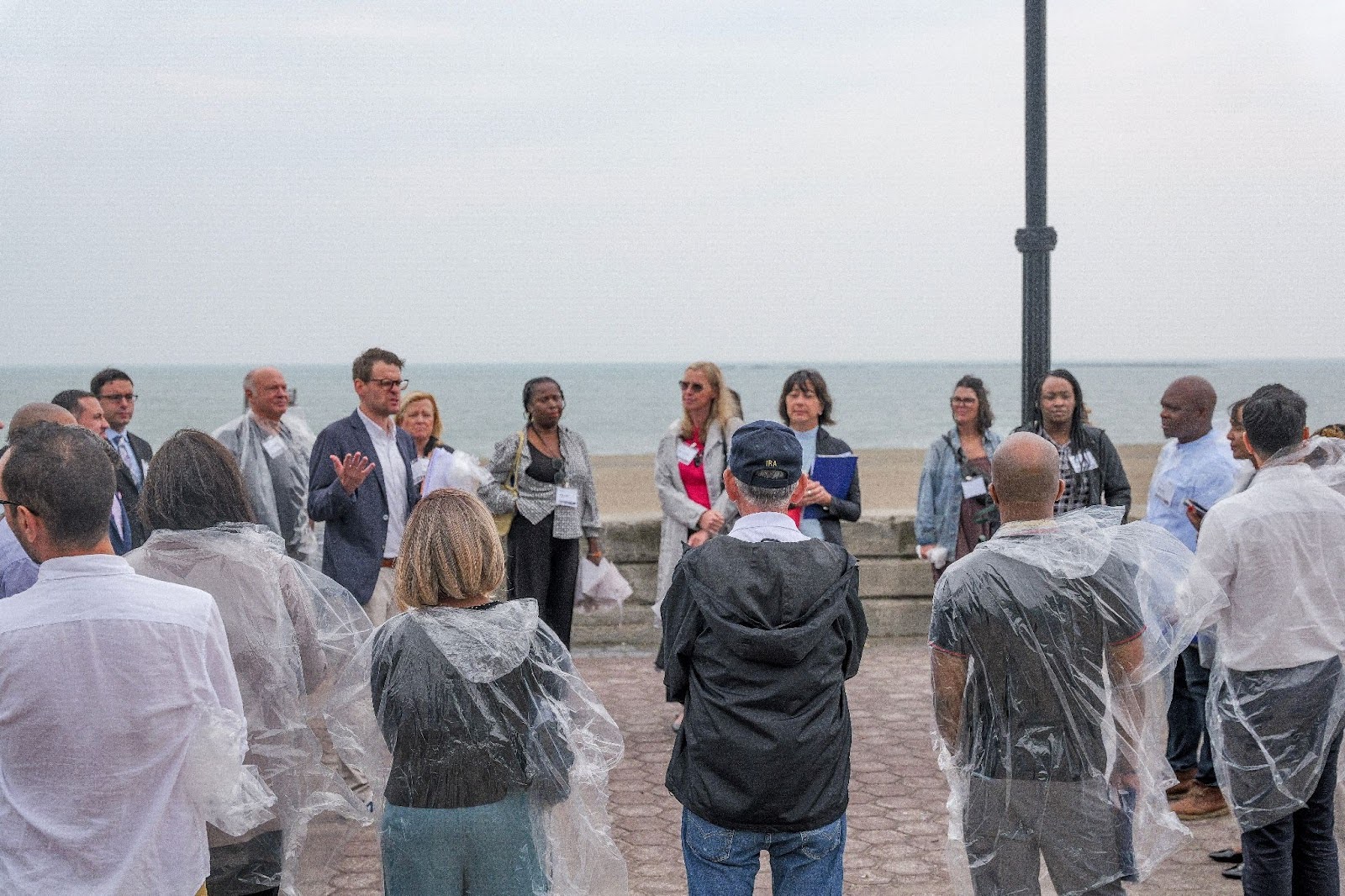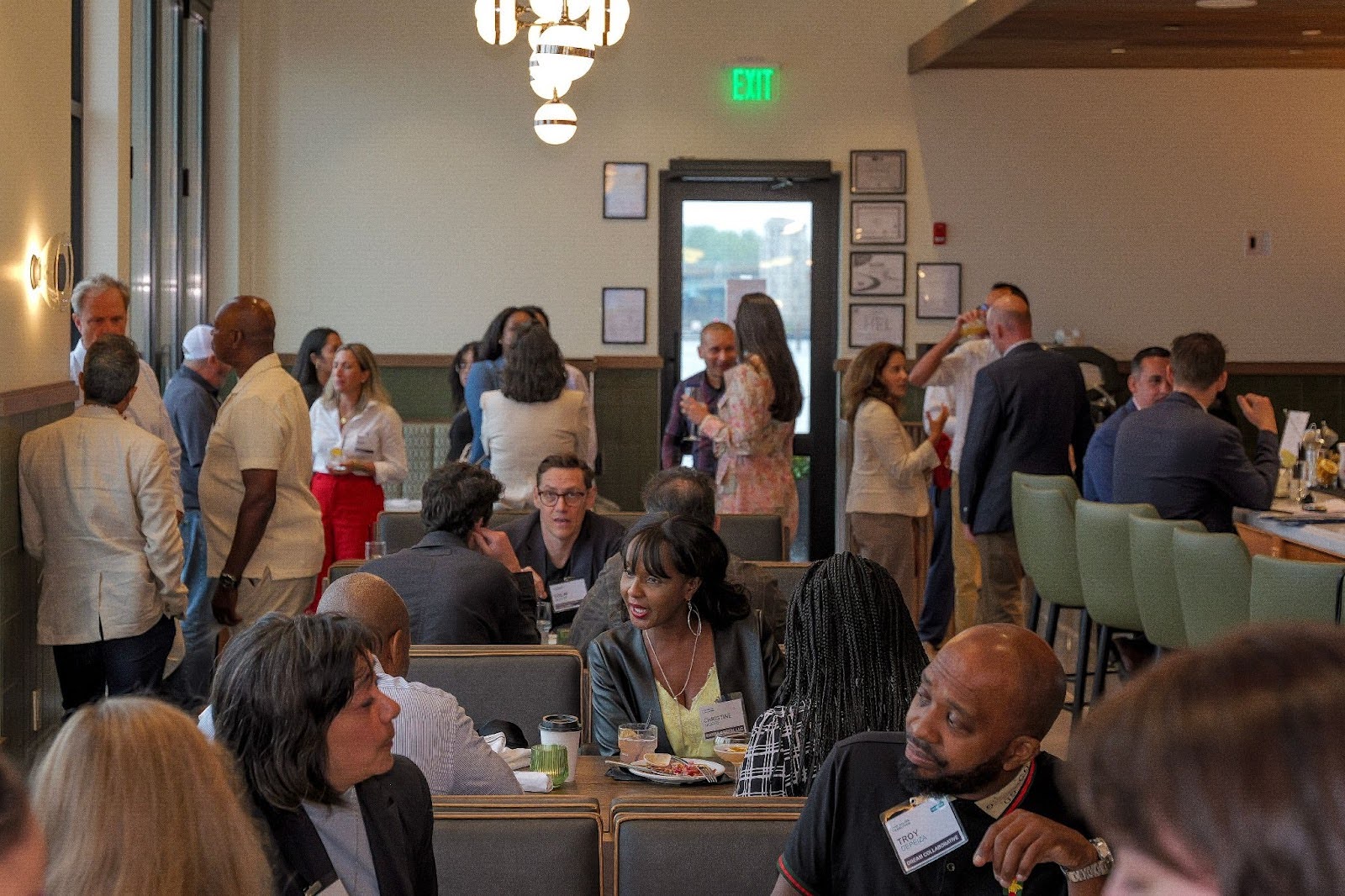Written by: Montell Khaldi
In late July, AHMA Organizers —Elvira Mora and Montell Khaldi— joined The Builder’s Coalition (TBC) for a Development Tour of the City of Revere + Summer Social event. In partnership with Mayor Keefe and the Revere Department of Planning and Community Development, participants were taken on a guided tour from Gibson Point, through to Waterfront Square, Suffolk Downs, Wonderland Marketplace, and -among other stops- the site of the future Revere High School.
Revere’s story is a fascinating one, deeply tied to its stunning three-mile shoreline. Originally known as Rumney Marsh, the area’s identity was transformed with the establishment of Revere Beach;, America’s first public beach in 1896. For decades, it was a bustling summer destination, a place of joy and escape for countless working-class families from Boston. This era, often called the “Coney Island of Boston,” cemented Revere’s place in the region’s cultural landscape.
While the amusements and vibrant nightlife of the past have faded over time, Revere’s inherent value (its beautiful coastline and strategic location just five miles from downtown Boston) remains. Today, the city is experiencing a powerful revitalization, a resurgence driven by a commitment to equitable and sustainable growth. This isn’t just about building new things; it’s about building a better, more resilient community for everyone.


Led by Tom Skwieraski, the city of Revere’s Department of Planning and Community Development has been a key driver in these development efforts. The city’s focus on creating housing for all income levels, revitalizing commercial corridors, and enhancing public spaces demonstrates a strong commitment to sustainable, equitable growth. These efforts include:
- Housing Production Plan: This groundbreaking plan, approved in 2025, provides a clear roadmap for creating housing options for residents across all income levels. It includes bold strategies like zoning reform to allow for more multi-family homes and the adoption of the Community Preservation Act to fund housing, historic preservation, and open space.
- Revitalizing Suffolk Downs: This massive 161-acre redevelopment project (2/3s of which are located in East Boston and the remaining third in Revere) is transforming a former racetrack into a vibrant, transit-oriented neighborhood. It’s a game-changer, bringing thousands of new housing units (including dedicated affordable housing), commercial spaces, and acres of public parks to the area.
- Broadway Master Plan: The city is focusing on its central commercial corridor, Broadway, with a plan to enhance its walkability, improve infrastructure, and create new public spaces. The goal is to build on Broadway’s historical legacy and ensure it thrives as the hub of civic and economic life.
- Northern Strand Community Trail: The city plans to further integrate the Northern Strand as a key piece of its regional transportation and recreation network. The city has already paved its one-mile segment and is working with partners to connect it with the continuous 10-mile path that links Everett, Malden, Saugus, and Lynn. The trail is being leveraged as a catalyst for economic development, with plans to connect it to transit stations and bus routes, and to promote multi-modal transportation. Additionally, plans for “wayside” and park developments along the trail aim to create new public spaces and recreational opportunities.

Another critical area of work is coastal resiliency, a vital issue for a city on the water. Projects like the Gibson Park Resiliency Project and the city’s involvement with the Saugus Pines River Advocacy for Regional Resilience (SPRARR) show a forward-thinking approach to mitigating the impacts of climate change while simultaneously improving community amenities.
Seeing these projects on the ground: the revitalized streets, the planning for new community spaces, and the ongoing work at major sites like Suffolk Downs is invaluable. It reinforces our belief that thoughtful, community-centered development is essential for creating more accessible and abundant housing for all. It’s a powerful reminder that our role as organizers is to support these local efforts and to ensure that the voices of pro-housing advocates are heard in every step of the process.



